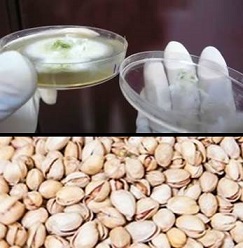pistachio aflatoxin levels
Pistachio aflatoxin levels are considered in the pistachio trade rules and standards. There are several ways to analyze pistachio aflatoxin levels. Below is a brief introduction to them.
Aflatoxin is a dangerous pesticide that produces Aspergillus fungus. Unfortunately, the ingestion of this toxin into the body, if exceeded, can cause a disease like cancer. One of the products that may be poisonous is pistachios.
In order to control and get out contaminated food (contaminated pistachio) from the food chain, FAO and, of course, different countries, they have determined pistachio aflatoxin levels in their standards. Therefore, they have also considered the standard and accurate methods of analyzing and analyzing pistachio aflatoxin levels. There are currently several ways to check pistachio aflatoxin levels. Let’s introduce some of the authentic methods below.
Methods for determining pistachio aflatoxin levels
The following three methods are for accurately testing pistachio aflatoxin levels. However, any method has some disadvantages in addition to its benefits. Including expensive equipment and so on. Therefore, studies are still ongoing for choosing a precise, cost-effective way.
- Thin-layer chromatography (TLC) is one of the most accurate methods for determining levels aflatoxin in pistachio.
- High Performance Liquid Chromatography (HPLC) is also considered. In pistachio trade, this method is one of the methods that exporters and importers use to identify levels aflatoxin in pistachio.
- ELISA is Another method. (ELISA: Linked Immune Sorbent Assay).
Certainly, the most important issues of success in pistachio trade are attention to the standards that different countries have imposed on this product. We can successfully complete pistachio trading by having complete information about the laws of each country.
Our way of communication: Please contact us.
Also our product list: The Catalog.





Leave a Reply
Want to join the discussion?Feel free to contribute!